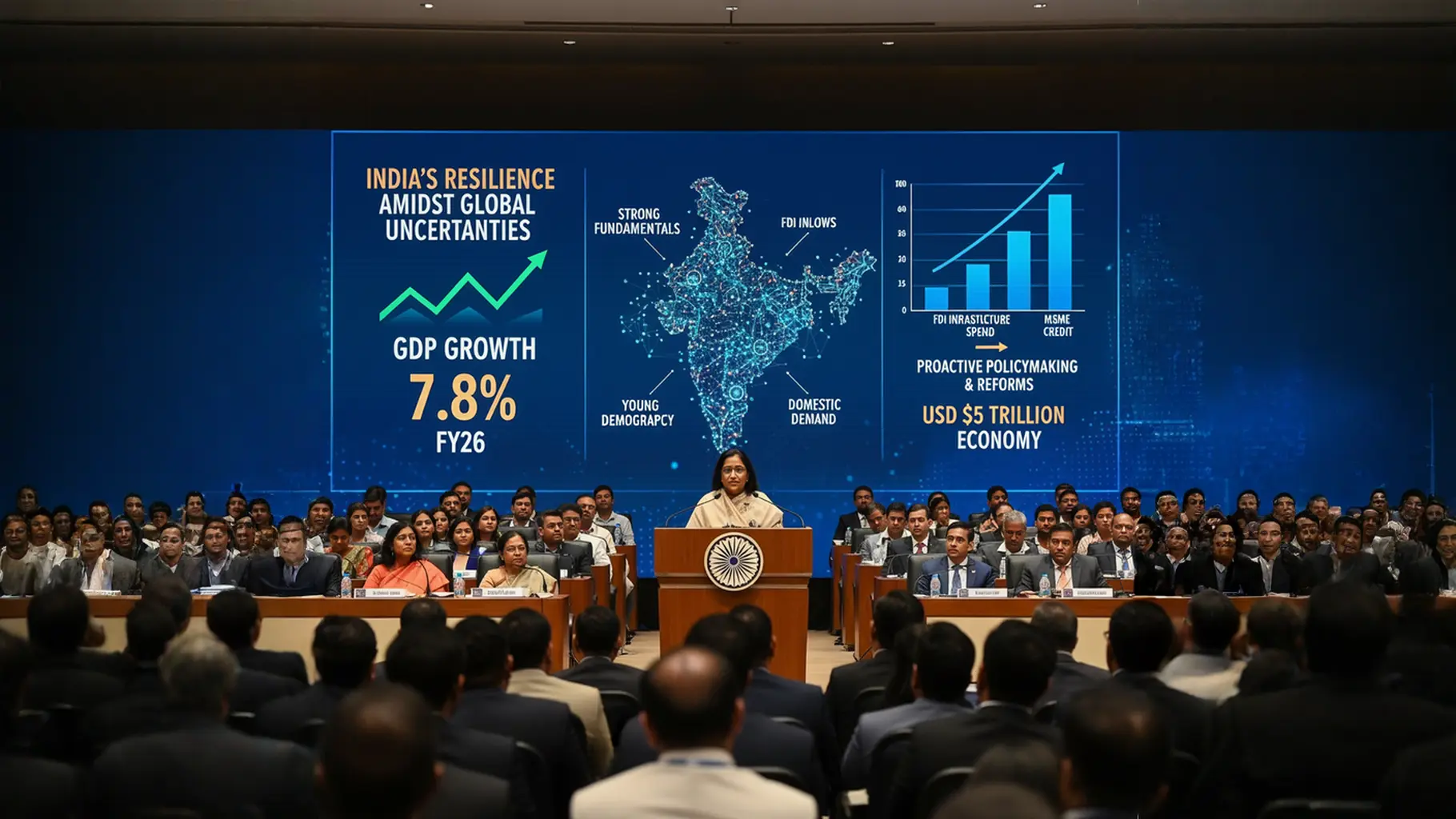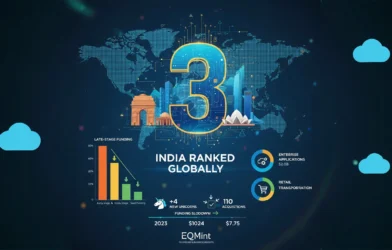Mumbai, September 2025 — Union Finance Minister Nirmala Sitharaman has said that India’s economy has demonstrated extraordinary resilience at a time when global markets are rattled by uncertainty. Speaking at the 91st Foundation Day celebrations of the Bank of Maharashtra, she highlighted that India’s economic strength rests on strong macroeconomic fundamentals, a youthful population, and domestic demand that shields it from external volatility.
India’s Performance Amid Global Challenges
Sitharaman noted that the global environment has become increasingly uncertain in the past year, with economic shocks being felt across nations. From geopolitical tensions to supply chain disruptions and volatile commodity prices, countries worldwide are grappling with instability.
“But amidst all these uncertain global situations, India’s resilience stands out,” Sitharaman said. She attributed this to favourable structural factors, including:
- A young demography, which provides both workforce strength and consumption demand.
- Macro stability, with prudent fiscal management and monetary discipline.
- Domestic demand, which remains the primary driver of India’s growth.
GDP Growth Highlights Robust Fundamentals
The Finance Minister emphasized that India’s resilience is not coincidental but the outcome of deliberate and proactive policymaking. She pointed to the country’s 7.8% GDP growth in the April-June quarter of FY26, which reinforced confidence in the economy’s momentum.
“This is not accidental at all,” she said, noting that the numbers reflect:
- Proactive fiscal and monetary policies that cushioned the economy from global shocks.
- Bold structural reforms, including the introduction of GST and the Insolvency and Bankruptcy Code (IBC).
- Massive infrastructure creation, both physical (roads, ports, railways) and digital (UPI, Aadhaar-enabled services).
- Improved governance and better transparency in financial systems.
- Enhanced competitiveness, positioning India as a reliable destination for investment.
Role of Infrastructure and Reforms
Sitharaman underlined that the last decade has been critical in building resilience. Infrastructure development has not only created jobs but also improved efficiency across sectors. Digital infrastructure, in particular, has transformed financial inclusion and access.
The government’s continued focus on reforms has improved India’s ease of doing business ranking, attracted foreign direct investment (FDI), and boosted productivity. Policies such as Production Linked Incentive (PLI) schemes have provided impetus to manufacturing, while renewable energy initiatives are driving sustainability.
Banking Sector and the Role of PSBs
The Finance Minister’s remarks came as she addressed the banking community on the Bank of Maharashtra’s Foundation Day. She stressed that the financial sector has been a pillar of resilience, with public sector banks (PSBs) demonstrating improved balance sheets, higher credit growth, and reduced non-performing assets (NPAs).
However, Sitharaman also urged banks to continue their support for key growth sectors, especially micro, small, and medium enterprises (MSMEs).
DFS Secretary’s Call to Support MSMEs and Education
Adding to her message, M. Nagaraju, Secretary of the Department of Financial Services (DFS), laid emphasis on inclusive lending. He urged PSBs to:
- Increase lending to MSMEs, which are the backbone of India’s economy and employment generation.
- Prioritize education loans, ensuring that no deserving student is denied financing for higher studies.
- Enhance agricultural and allied sector lending, supporting rural and semi-urban livelihoods.
Nagaraju emphasized that while credit growth must continue, banks must be vigilant about the quality of loans to ensure asset quality and prevent a buildup of fresh NPAs.
MSMEs: Backbone of India’s Growth
The call to expand credit to MSMEs is particularly significant. MSMEs contribute nearly 30% of India’s GDP and generate over 110 million jobs. However, they often struggle to access timely and affordable credit. Expanding loan availability for this sector can not only boost growth but also ensure balanced regional development.
Similarly, a focus on education loans will help India harness its demographic dividend by empowering its youth with access to higher education and skill development.
India’s Outlook Remains Strong
Economists believe Sitharaman’s remarks reflect a confident outlook for India, despite global headwinds. With inflation moderating, foreign exchange reserves stable, and fiscal deficit under control, the country is better placed than many peers.
International agencies such as the IMF and World Bank have consistently highlighted India as the fastest-growing major economy. This resilience, they argue, will continue to make India a preferred destination for global investors looking to diversify away from other emerging markets.
Conclusion
Finance Minister Nirmala Sitharaman’s address underscores India’s unique position in the global economy. At a time when volatility is shaking developed and emerging economies alike, India’s strong fundamentals, demographic dividend, and domestic demand provide stability.
Her comments also point to the importance of policy continuity, infrastructure growth, and reforms, which have built resilience over the past decade. With additional emphasis on MSMEs, education, and agriculture lending, the government is making clear that inclusive growth remains at the heart of its economic agenda.
As Sitharaman put it, India’s growth and resilience are not accidental but the result of strategic planning and execution. For investors, businesses, and citizens, the message is clear: India is well-prepared to weather global storms while continuing on its path toward becoming a $5 trillion economy in the near future.
Disclaimer: This blog article references information originally published on Business Standard. All credit for the primary reporting and statements belongs to the original source. We have curated and presented the content here solely for informational and educational purposes, without claiming ownership of the original reporting.









